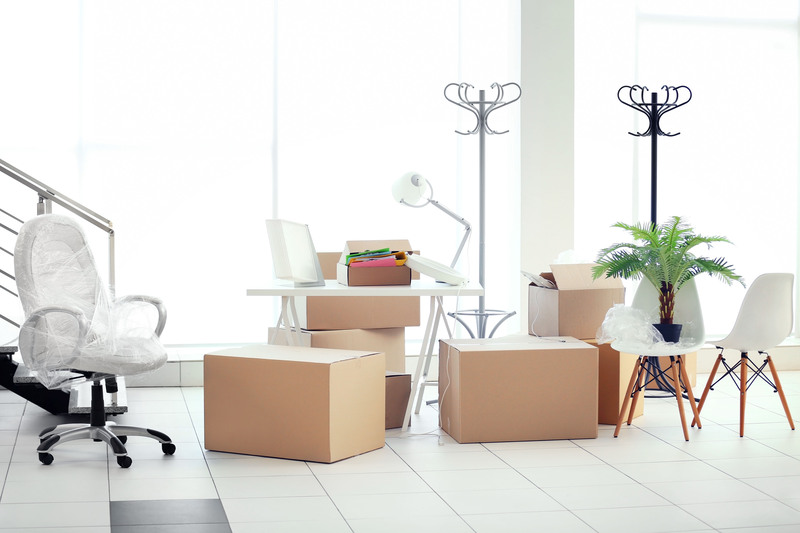DIY Guide to Moving Heavy Stuff Without Assistance
Have you ever been faced with the daunting task of relocating a washing machine, a bulky dresser, or a hefty box of books all by yourself? Learning how to move heavy things solo can save time, money, and even your back. This comprehensive DIY guide equips you with proven strategies, essential tools, and professional tips so you can master moving heavy objects without assistance. Whether you're redecorating, moving to a new home, or tackling a renovation, this article covers everything you need to know to lift, slide, and shift burdensome items safely and efficiently.

Why Learn to Move Heavy Objects Alone?
There are plenty of reasons why you might need to move heavy items by yourself:
- No friends or family around to help you at a given time
- Budget limitations make hiring movers impossible
- You love the challenge and independence
- Sudden furniture rearrangement needs
- Living solo or in isolated places
Whatever the reason, being equipped with the right steps and gear can make every move smoother and safer.
Safety Should Always Come First
Assess Your Limits
Before you begin, assess the true weight and size of the object. Ask yourself:
- Can I manage this alone, or is it unsafe?
- Is there risk of damaging the floor, walls, or the item?
- Could I injure myself?
If in doubt, it's always worth calling for help with extremely heavy or awkward items, especially if stairs or tight hallways are involved.
Wear the Right Clothing and Footwear
Safety starts with what you wear. Favor close-fitting clothes that won't snag, and choose non-slip, supportive footwear to prevent falls and allow for sturdy footing.
Prepare the Space
Clear pathways so you won't trip. Remove rugs, cords, or obstacles. Prop open doors and secure pets out of the way. A little prep can save a lot of hassle.
Essential Tools for Moving Heavy Stuff Alone
- Furniture sliders: These let you slide heavy furniture over hardwood, tile, or carpeted floors with ease.
- Dolly or hand truck: A must-have for appliances, boxes, or stacked items. There are appliance dollies (with straps) and standard two-wheelers.
- Lifting straps (forearm forklifts): Distribute weight to your legs, not your back, and often make an item feel lighter.
- Moving blankets: Protect furniture and floors. They can also be used to help drag lighter items over smooth surfaces.
- Basic tools: Screwdrivers, wrenches, pliers for disassembling furniture (removing legs, knobs, drawers, or doors can significantly lighten the load).
- Work gloves: Shield your hands from splinters, cuts, or pinches.
Step-by-Step Guide: How to Move Heavy Things by Yourself
1. Plan Your Route
Before touching anything, mentally walk through your exit path. Measure doorways and hallways to ensure your item will fit. Consider removing doors or hardware if necessary.
2. Lighten Your Load
If possible, break down large pieces. Take drawers out of dressers, unscrew table legs, detach doors from appliances, and remove cushions from couches. The lighter you make the load, the safer you'll be.
3. Use the Right Lifting Techniques
- Stand close to the item
- Keep your feet shoulder-width apart for stability
- Bend at your knees, not your waist
- Get a firm grip, keep the item close to your body, and straighten using your leg muscles
- Move slowly and carefully; don't twist your body
Never lift more than you can safely handle. If you feel strained, stop immediately.
4. Harness the Power of Sliders and Blankets
For short distances: Place furniture sliders or a folded moving blanket under each corner or foot of the item. For carpet, use hard plastic sliders; for hard floors, use felt ones.
Gently tilt the furniture (one side at a time) and position the slider or blanket. This allows you to glide couches, dressers, and more with very little force.
5. Rolling Heavy Loads with a Dolly
If you have access to a dolly, tip the item slightly, slip the dolly underneath, and carefully tilt the item back against the dolly's frame. Secure it with straps if available.
- To ascend or descend stairs: Consider an appliance dolly with stair climbers. If one isn't available, move slowly, taking one step at a time, ensuring you always have solid footing.
6. Dragging as a Last Resort
If no sliders or dollies are available, use a thick blanket or rug under the item to protect the floor. Drag gently and never drag items across rough or wet areas.
Special Techniques for Common Heavy Items
Mattresses
- Bendable foam and spring mattresses can be "taco-folded" for easier handling--secure with straps.
- Drag standing mattresses across smooth floors for better maneuverability.
Appliances
- Empty and defrost refrigerators at least a day prior.
- Keep washers upright to avoid damaging the drum. Tilt only as much as needed to get the appliance on the dolly.
Dressers and Heavy Furniture
- Remove drawers and contents to lighten the load.
- Use lifting straps for upright, tall objects.
- Slide or roll to avoid unnecessary lifting.
Bookshelves and Cabinets
- Remove shelves and glass doors if possible.
- Use two sliders under each end to "walk" the cabinet forward.
Protecting Your Home During a Solo Move
- Cover entryways with cardboard or runners to shield flooring.
- Wrap door frames and corners with towels or scrap fabrics to prevent dings.
- Use moving blankets as shields for walls in narrow spaces.
DIY Moving Tips & Tricks from the Pros
- Push, don't pull: You get better leverage and avoid wrenched muscles. Crouch behind the load and push using legs (not arms or back).
- Use gravity wisely: If moving down ramps or stairs, let gravity help, but always control the load's speed.
- Pivot in tight spots: For large items, gently rotate on sliders, like turning a steering wheel, instead of trying to lift or drag sideways.
- Keep items upright: Especially for appliances, this avoids spills or mechanical issues.
- Take breaks: Rest when you feel fatigued. Exhaustion increases the risk of accidents.
Common Mistakes When Moving Heavy Objects Alone
- Using improper lifting techniques - leading to back injuries
- Failing to clear the pathway
- Overestimating strength - pride can be painful
- Not protecting surfaces - resulting in scratched floors and dented walls
- Forgetting to use protective gloves
Frequently Asked Questions
Is it safe to move heavy furniture alone?
It can be, but only with proper preparation, technique, and tools. Know your personal limits, and never attempt excessively heavy or awkward items alone if it feels unsafe.
What's the best tool for moving heavy stuff by yourself?
A dolly (hand truck) combined with sliders covers most residential moves. For small or hard-to-sliding items, lifting straps and blankets are invaluable.
How do I protect my back when moving heavy things?
- Lift with legs, not your back
- Keep the load tight to your body
- Never twist mid-lift
- Take small steps and keep movements controlled

When to Call for Help
Even the most independent DIYer needs to recognize limits. If you feel unsafe, are dealing with very heavy or large items, or must maneuver up or down stairs, get a friend, neighbor, or professional to assist. Your health and home come first.
Conclusion: You Can Move Heavy Items Yourself -- Safely and Easily
Armed with the right strategies, tools, and mindset, moving heavy stuff alone becomes not just possible, but a feat you can be proud of. Whether you're maneuvering a sofa across the room or dragging an appliance out to the curb, take it one step at a time, use the right aids, and prioritize your safety.
Now that you have the ultimate DIY guide to moving heavy items without help, tackle your next big move with confidence!



